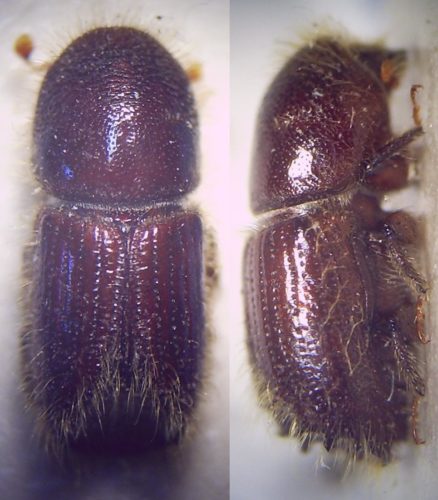European spruce bark beetle; this dark brown + 5 mm beetle is found on spruce, but can also be found on other pines and firs.
Do not confuse with:
Larch bark beetle
European spruce bark beetle (Ips typographus). This dark brown + 5 mm small beetle is found on spruce, but can also be found on other pines and firs. This beetle belongs to the bark beetles (Curculionidae) and is found from Europe to Asia and parts of Africa.
Resin formation keeps the European spruce bark beetle out of the tree, but weakened or storm-damaged trees can be colonized by the European spruce bark beetle. Especially forests in which only Norway spruce (monoculture) is planted can be completely destroyed.
The beetle
Drought or, on the contrary, too wet areas affect the health of trees and can then fall prey to bark beet
Infested trees are often cut down to prevent further infestation; however, such an infestation also simply disappears for lack of spruce. In the private garden, the European spruce bark beetle is not likely to occur unless the garden borders a plot of Norway spruce.
European spruce bark beet
Woodpeckers love European spruce bark beet
Where to find
- Norway spruce
- Douglas fir
- Larch
Control
Difficult to to control; once the bark is loose, the damage cannot be reversed. Cutting down tree (private garden) is the only remedy. In addition, this will prevent damage to any neighboring trees.
Prevention
Provide a woodpecker-friendly environment: woodpeckers eat insects including the European spruce bark beetle.
In forestry, avoid monocultures; in a diverse forest, the European spruce bark beetle is less likely to spread.

